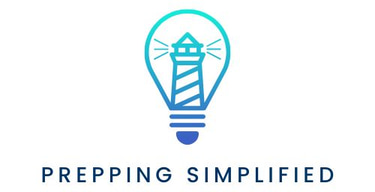GRID DOWN:
Lights out? No problem. – Master survival without electricity, keep warm and stay connected even when modern infrastructure fails.
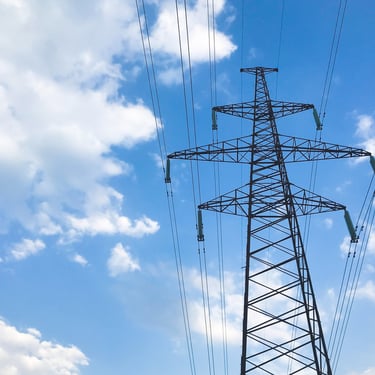
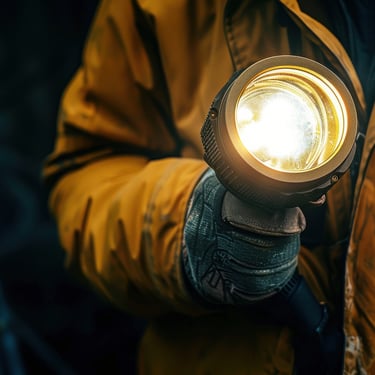
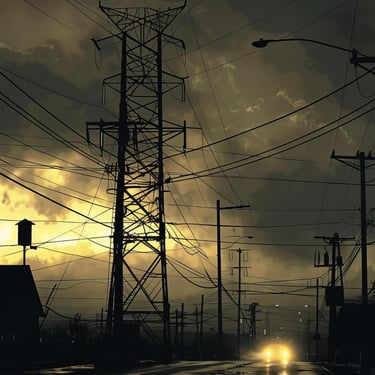
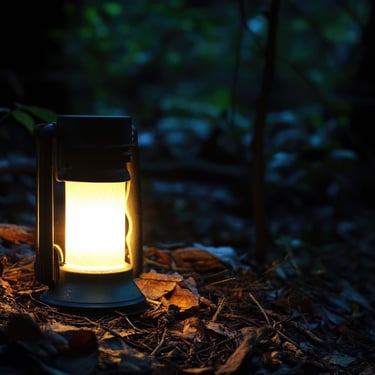
Blackouts can strike unexpectedly, leaving you and your family without power for hours, days, or even weeks. Whether caused by natural disasters, aging infrastructure, or cyberattacks, preparing for a power outage ensures safety, comfort, and continuity during challenging times. Here are actionable tips, real-life examples, and product recommendations to help you navigate a blackout effectively.
1. Create a Power-Outage Emergency Kit
Having a dedicated kit ready for power outages can make the situation far more manageable.
Essential Items for Your Kit:
Flashlights and Lanterns: Opt for battery-powered or rechargeable LED lanterns for long-lasting light.
Extra Batteries: Stockpile AA, AAA, and other battery types your devices use.
Portable Phone Chargers: Keep USB power banks fully charged.
First Aid Supplies: Basic medical gear is crucial for minor injuries.
Actionable Tip: Test your emergency kit periodically to ensure everything is functional and batteries are charged.
Real-Life Scenario: During a 2021 Texas blackout, families relied heavily on flashlights and battery banks to navigate dark homes and stay connected.
Do: Store your kit in an easily accessible location.
Don’t: Use candles unattended as they pose a fire risk.
Top Picks:
Vont LED Lanterns (4 Pack) – Lightweight, durable, and bright LED lanterns.
Anker PowerCore Portable Charger – High-capacity power bank for phones and small devices.
2. Secure Backup Power Options
Power backups can keep essential appliances running during extended outages.
Backup Solutions:
Portable Generators: Ideal for powering refrigerators, fans, and small appliances.
Solar Chargers: Provide renewable power for electronics.
Uninterruptible Power Supplies (UPS): Protect computers and other sensitive devices from sudden shutdowns.
Actionable Tip: Familiarize yourself with generator safety guidelines to prevent carbon monoxide poisoning.
Real-Life Scenario: After Hurricane Ida, many households used portable generators to keep their refrigerators running and avoid food spoilage.
Do: Store enough fuel for your generator and maintain it regularly.
Don’t: Run generators indoors or in enclosed spaces.
Top Picks:
Westinghouse Portable Generator – Reliable power supply for emergencies.
Jackery Solar Generator – A clean, quiet power solution using solar energy.
3. Stockpile Non-Perishable Food and Water
Without electricity, refrigeration stops, and clean water access may become limited.
Essential Supplies:
Canned and Freeze-Dried Foods: Keep a variety of easy-to-prepare meals.
Manual Can Opener: Ensure you can open canned goods without power.
Water Storage Containers: Store at least one gallon of water per person per day.
Actionable Tip: Rotate stored food and water to keep supplies fresh.
Real-Life Scenario: During a 2019 California blackout, many residents relied on canned goods and bottled water as grocery stores struggled to restock.
Do: Plan for dietary needs and allergies in your household.
Don’t: Forget to include pet food in your stockpile.
Top Picks:
Augason Farms Emergency Food Supply – Long-lasting, shelf-stable food.
Reliance Aqua-Tainer Water Container – Durable and easy-to-use water storage.
4. Stay Informed During the Outage
Staying updated on the situation is vital for making informed decisions.
Communication Tools:
Emergency Radios: NOAA weather radios provide real-time updates.
Walkie-Talkies: Maintain communication within your household or neighborhood.
Whistles: Signal for help if needed.
Actionable Tip: Regularly check and replace batteries in communication devices.
Real-Life Scenario: In Puerto Rico after Hurricane Maria, battery-powered radios were the primary source of information for residents.
Do: Keep spare batteries for all communication devices.
Don’t: Rely solely on your smartphone for updates.
Top Picks:
Midland NOAA Emergency Weather Radio – Provides weather alerts and emergency updates.
Motorola T600 Walkie-Talkies – Waterproof and long-range communication devices.
5. Prepare Your Home for Extended Blackout
Taking steps to safeguard your home can improve comfort and safety during an outage.
Home Preparation Tips:
Insulate Windows and Doors: Reduce heat loss in winter and keep cool in summer.
Install Surge Protectors: Protect appliances from power surges when electricity returns.
Use Blackout Curtains: Retain indoor temperatures by blocking external heat or cold.
Actionable Tip: Conduct regular maintenance on appliances and HVAC systems to ensure they’re in good condition before a blackout.
Real-Life Scenario: In freezing conditions during the 2021 Texas blackout, homes with insulated windows retained warmth longer.
Do: Keep extra blankets and warm clothing on hand.
Don’t: Overload power strips when electricity is restored.
Top Picks:
NICETOWN Blackout Curtains – Energy-efficient and effective at temperature control.
APC Surge Protector Power Strip – Reliable protection for electronics.
6. Maintain Health and Hygiene
Health and hygiene can quickly become challenges during extended power outages.
Essential Supplies:
Hygiene Kits: Stock wet wipes, hand sanitizer, and toilet paper.
Portable Toilets: Useful when water supplies are disrupted.
Basic First Aid Kit: Include medications, bandages, and antiseptics.
Actionable Tip: Practice conserving water during non-emergency times to prepare for shortages.
Real-Life Scenario: After the 2011 earthquake in Japan, hygiene kits helped prevent illness in shelters where water access was limited.
Do: Sanitize hands regularly to prevent the spread of germs.
Don’t: Let waste accumulate inside the home.
Top Picks:
Portable Toilet – Compact and easy-to-use portable toilet.
Dude Wipes Flushable Wipes – Convenient hygiene solution during outages.
Blackouts are unpredictable, but with preparation, you can ensure safety and comfort for your household. Build an emergency kit, stock essential supplies, and invest in reliable gear to stay ahead of potential outages. Start small, plan for your family’s specific needs, and revisit your preparedness strategy regularly. When the lights go out, you’ll have peace of mind knowing you’re ready.
Disclaimer:
This site contains affiliate links to Amazon. As an Amazon Associate, I may earn a commission from qualifying purchases. Your support helps keep the site running, with no extra charge to you.
The information provided on this website is for general informational purposes only. While we strive to ensure accuracy and reliability, the content is not intended as professional advice. Always consult with qualified professionals for specific needs or situations.
